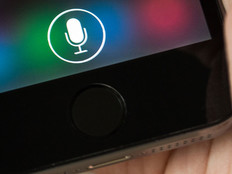The Future of Museums Is Progressing More Than You Might Think
Museums are usually places where the past is preserved and displayed, but the Brooklyn Museum is poised to reinvent itself as a multidimensional, futuristic experience.
In a recent article from Technical.ly, a representative for the Brooklyn Museum explained how it plans to use its mobile app, ASK, and Apple iBeacon technology to add an interactive layer to the visitor experience:
Not only does the Eastern Parkway institution intend to reconfigure its whole reception area, make better use of the space and help guests get questions answered more effectively, the team intends to do so iteratively. The new structures the team will use to reconfigure the entryway will be modular, so the museum can configure, test, reconfigure and test again.
It’s a software approach to a very weighty project.
“The new environment combined with ASK will offer our visitor a new relationship to the Museum — an opportunity to truly experience the Museum and especially its exceptional collections,” the museum’s Shelly Bernstein said in a statement.
The app, which is for iOS only, is a central element of this new experience; users will be asked to download the app upon entry to the museum and then navigate their experience and ask questions within the app. The museum chose iOS because 83 percent of its visitors use Apple devices, according to Bernstein.
Another emerging player in the mobile and museum space is Cueseum, which is receiving serious venture capital funding, according to a report from Boston Business Journal. So far, Cueseum has found some traction with museums in Boston and New York City.
And over in Baltimore, museum curators at the Walters Art Museum recently held a hackathon called ArtBytes. The latest edition of the hackathon produced some pretty inspiring museum innovations, according to a report from Technical.ly. Here’s a sampling:
4D Odyssey: Developed by two Baltimore city school teachers and Kathleen Mazurek of the Digital Harbor Foundation, this project seeks to create “auras” of museum art in real time. Museum visitors can scan one of the objects found in the museum with the shareware, triggering an audio or video summary of the art. There’s also room for users to generate their own voiceover. The team thinks it would also be useful as an interactive tool for teachers.
Scavenge Art: Described as a “’Where’s Waldo’ for art,” this game urges players to match photos on a screen with art found in the museum. It also includes a map of the world that traces where the art originated, as well as collections it passed through before arriving at the Walters. It’s equipped with location tracking and can provide feedback to museum staff about how many visits an object got, and other analytics.
Paragone: This app, which you can already peruse on Heroku, brings social elements into the museum experience. It presents top museum picks of the day, then allows viewers to comment. To focus the conversation, the app provides prompts that encourage users to specify what they think about a piece of art. It also links to Twitter so you can see what’s trending.
So the next time you’re visiting a museum, just know that, while the artifacts may be frozen in time, the experience is decidedly futuristic.









